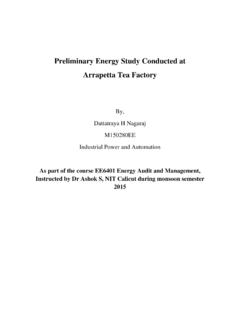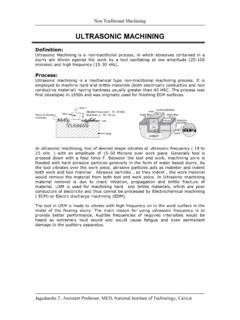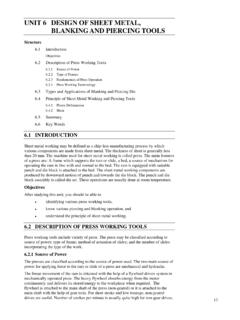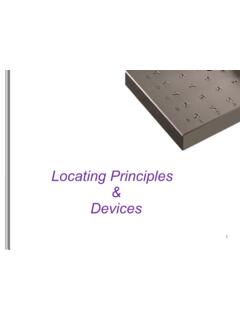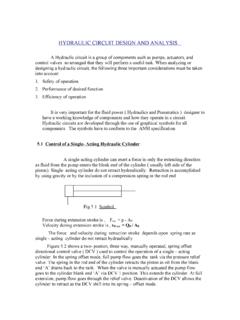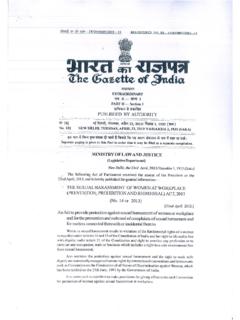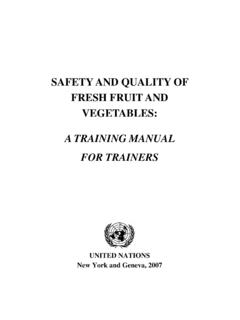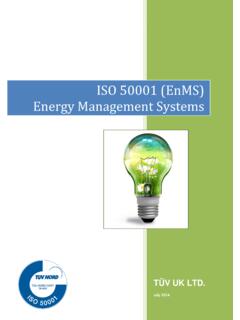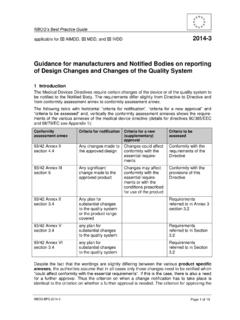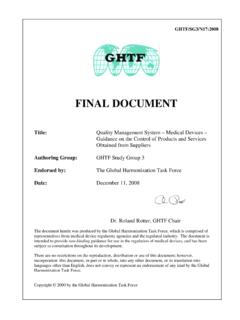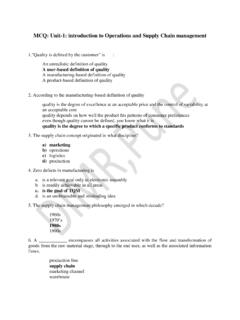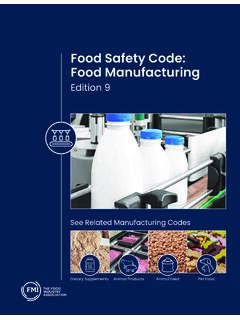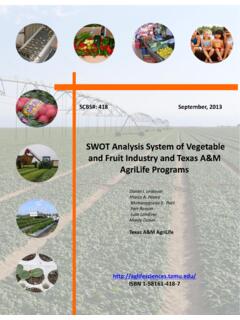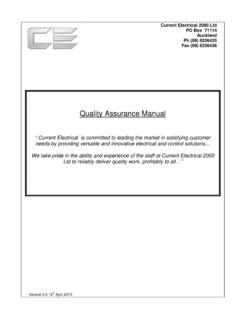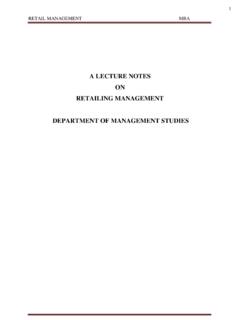Transcription of SUPPLY CHAIN MANAGEMENT
1 SUPPLY CHAIN MANAGEMENT . Objective Maximise the overall value generated is the difference between what the final product is worth to the customer and the effort the SUPPLY chains expends in filling the request of the customer SUPPLY CHAIN profitability is the difference between the revenue generated from the customer and the overall cost across the SUPPLY CHAIN It is the total profit to be shared across all SUPPLY CHAIN stages SUPPLY CHAIN success is measured in terms of SUPPLY CHAIN profitability and not in terms of the profits at an individual stage Revenue is from customer positive cash flow All other cash flows are simply fund exchanges that occur within the SUPPLY CHAIN given that different stages have different owners All flows of
2 Information, product or funds generates costs within the SUPPLY CHAIN SUPPLY CHAIN MANAGEMENT involves the MANAGEMENT of flows between and among stages in a SUPPLY CHAIN to maximise total SUPPLY CHAIN profitability Decision Phases Three categories - Depending on the frequency of each decision and the time frame over which a decision has an impact, SUPPLY CHAIN strategy or design SUPPLY CHAIN planning SUPPLY CHAIN operation SUPPLY CHAIN strategy Decides how to structure the SUPPLY CHAIN over the next several years - CHAIN configuration, - resource allocated and - process at each stage should perform Decisions include - location and capacities of production and warehousing facilities, - the products to be manufactured or stored at various locations, - the method of transportation to be made available along different shipping legs, and - the type of information system to be utilised 9.
3 National Institute of Technology Calicut Department of Mechanical Engineering SUPPLY CHAIN planning Under the given configuration decisions are made which has impact on a time frame of quarter to a year Starts with a forecast the coming year or a comparable time frame Planning decisions include which market will be supplied from which locations, the subcontracting for manufacturing, the inventory policies to be followed, and the timing and size of marketing promotions Companies in the planning phase try to incorporate any flexibility built into the SUPPLY CHAIN in the design phase and exploit it to optimise performance Companies define a set of operating policies that govern short-term operations SUPPLY CHAIN operation Decisions are taken regarding individual customer order and the time frame is week or days Configuration is fixed and policies are defined Objective is to handle incoming customer orders in the best possible manner Decisions related with allocation of inventory or production to individual orders, set a date that an order is to be filled, generate pick lists at a warehouse.
4 Allocate an order to a particular shipping mode and shipment, set delivery schedules of trucks, and place replenishment order Exploit the reduction in uncertainty and optimise performance Process View of SUPPLY CHAIN A SUPPLY CHAIN is a sequence of processes and flows that take place within and between different stages and combine to fill a customer need for a product Two ways to view the processes performed in a SUPPLY CHAIN Cycles view and Push/pull view Cycle view Defines the processes involved and the owners of each process Process in a SUPPLY CHAIN are divided into a series of cycles 10. National Institute of Technology Calicut Department of Mechanical Engineering Cycles are performed at the interface between two successive stages of a SUPPLY CHAIN SUPPLY CHAIN process can be broken down into four process cycles such as Customer order cycle Replenishment cycle Manufacturing cycle Procurement cycle Each cycles occurs at the interface between two successive stages of the SUPPLY CHAIN A cycle view of the SUPPLY CHAIN is very useful when considering operational decisions It clearly specifies the roles and responsibilities of each member of the SUPPLY CHAIN It helps the designer to consider the infrastructure required to support the processes Customer Customer Order Cycle Retailer Replenishment Cycle
5 Distributor Manufacturing Cycle Manufacturer Procurement Cycle Supplier Fig 1: SUPPLY CHAIN Process Cycles 11. National Institute of Technology Calicut Department of Mechanical Engineering Customer Customer Arrival Order Receiving Customer Customer Order Entry Order Fulfillment Fig. Customer Order Cycle Retailer Order Retailer Trigger Order Receiving Retailer Retailer Order Entry Order Fulfillment Fig 2: Replenishment Cycle Order Arrival Receiving Production Manufacturing and Scheduling Shipping Fig 3: Manufacturing Cycle 12. National Institute of Technology Calicut Department of Mechanical Engineering Order Based on Receiving at Manufacturer's Manufacturer Production Schedule Arrival Supplier Production Component Scheduling Manufacturing and Shipping Fig 4: Procurement Cycle Push/Pull View Categorises processes in a SUPPLY CHAIN based on whether they are initiated in response to a customer order (pull) or in anticipation of a customer order (push).
6 Categorisation is based on the timing of process execution relative to end customer demand At the time of execution of a pull process customer demand is known with certainty In case of push process at the time of execution of a process demand is not known and must be forecasted Pull process reactive process Push process speculative process Push/pull boundary in a SUPPLY CHAIN separates push process from pull process Very useful when considering strategic decisions relating to SUPPLY CHAIN Forces more global consideration of SUPPLY CHAIN processes as they relate to a customer order More the pull process better the SUPPLY CHAIN 13. National Institute of Technology Calicut Department of Mechanical Engineering Customer Order and Customer Manufacturing Cycle Manufacturer (Dell).
7 Procurement Cycle Supplier Fig 5: Dell SUPPLY CHAIN Customer PULL. Order and PROCESS. Manufacturing Cycle Customer Order and Manufacturing Cycle Customer Order Arrives PUSH Procurement Cycle Procurement PROCESS. Cycle Fig 6: Push/Pull Processes of Dell SUPPLY CHAIN COMPETITIVENESS AND SUPPLY CHAIN . STRATEGIES. Competitive strategy of a company defines the set of customer needs that it seeks to satisfy through its products and services Defined based on how customer prioritises product cost, delivery time, variety and quality Targets one or more customer segments and aims to provide products and services that satisfy these customer's needs Some company's competitive strategies are defined around the following High availability of a variety of reasonable quality products at low prices eg: Wal-Mart 14.
8 National Institute of Technology Calicut Department of Mechanical Engineering Better customer convenience, availability and responsiveness eg: McMaster Carr MRO items - over 200,000 items through catalog and web site Better customisation, and variety at reasonable cost eg: Dell To execute a competitive strategy of a company, all the functions play a role and each must develop its own strategy SUPPLY CHAIN strategy determines the nature of procurement of raw materials, transportation of materials to and from the company, manufacture of the product or operations to provide the service, and distribution of the product to the customer, along with any follow-up service This strategy includes what many traditionally include Supplier strategy Operations strategy, and Logistics strategy Decisions regarding inventory, operating facilities, transportation.
9 And information flows in the SUPPLY CHAIN are all part of SUPPLY CHAIN strategy Achieving Strategic Fit Strategic fit means that both the competitive and SUPPLY CHAIN strategies have the same goal It refers to consistency between The customer priorities that the competitive strategy hopes to satisfy and The SUPPLY CHAIN capabilities that the SUPPLY CHAIN strategy aims to build Major task of chief executive officer (CEO) is aligning all of the core strategies with the overall competitive strategy to achieve strategic fit During the SUPPLY CHAIN design a key consideration is the strategic fit A company's success or failure closely linked to the following 1. The competitive strategy and all functional strategies must fit together to form a coordinated overall strategy 2.
10 Different functions in a company must appropriately structure their process and resources to be able to execute these strategies successfully Basic steps to achieve strategic fit 1. Understanding the customer, and SUPPLY CHAIN uncertainty 2. Understanding the SUPPLY CHAIN capabilities 3. Achieving strategic fit Understanding the Customer and SUPPLY CHAIN Uncertainty 15. National Institute of Technology Calicut Department of Mechanical Engineering To understand the customer, a company must identify the needs of the customer segment being served Customer demand from different segments may vary along several attributes: 1. The quantity of the product needed in each lot 2. The response time that customers are willing to tolerate 3.


